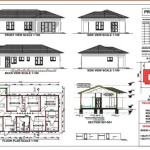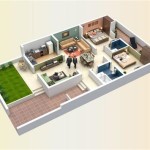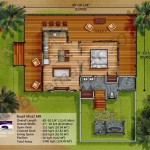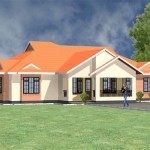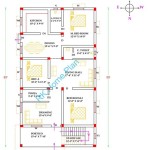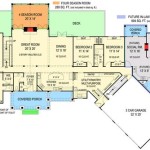Color Coded House Plans: Unveiling the Secrets of Construction Clarity
### Introduction Navigating the complexities of house construction can be a daunting task, filled with technical jargon and intricate details that may seem overwhelming. However, color-coded house plans serve as a beacon of clarity, transforming blueprints into easily understandable visual guides that streamline the construction process for professionals and homeowners alike. Dive into the world of color-coded house plans to uncover their benefits, key components, and the simplicity they bring to building your dream home. ### Demystifying the Advantages of Color-Coded House Plans Stepping into the realm of color-coded house plans unveils a world of advantages that make them an indispensable tool for construction projects. These plans provide a clear and concise visual representation of the house, allowing everyone involved in the building process to have a comprehensive understanding of the project. Let's delve into the benefits that make color-coded house plans stand out: 1.Simplified Communication:
Color-coded house plans bridge the communication gap between architects, contractors, and homeowners. The visual nature of these plans eliminates the need for extensive written descriptions, fostering a shared understanding among all parties involved. 2.Enhanced Accuracy:
Color-coding enables the clear differentiation of various elements within the house plan. This visual distinction minimizes errors and omissions, ensuring that the construction process adheres precisely to the intended design. 3.Efficient Decision-Making:
The visual clarity of color-coded plans facilitates informed decision-making. Homeowners can visualize their dream home and make informed choices about materials, finishes, and layout. This participatory approach leads to greater satisfaction with the final outcome. ### Unraveling the Secrets of Color-Coding At the heart of color-coded house plans lies a system of colors assigned to different elements of the house. Each color represents a specific component or area, making it easy to identify and understand the intricacies of the design. The most common color-coding scheme includes: 1.Walls:
Represented by a solid color, walls are easily distinguishable from other elements. This color coding helps determine the shape and layout of the rooms. 2.Windows and Doors:
Windows and doors are typically depicted using a combination of colors. The primary color indicates the window or door's placement, while a secondary color highlights its dimensions and style. 3.Flooring:
Flooring materials are represented by different patterns or textures. This visual distinction aids in visualizing the type of flooring intended for each room. 4.Roofs:
Roofs are color-coded to indicate their shape, pitch, and material. The colors chosen for roofs help determine the overall architectural style of the house. ### Color-Coding Beyond the Basics While the aforementioned color-coding scheme forms the foundation, additional elements can be incorporated to enhance the clarity of house plans. These may include: 1.Color-Coded Legends:
Legends provide a quick reference guide to the colors used in the plan. This ensures that everyone involved in the project has a clear understanding of the color-coding system. 2.Dimension Lines:
Dimension lines are used to indicate the exact measurements of various elements, such as room sizes and wall lengths. These lines enable precise construction and accurate estimation of materials needed. 3.Notes and Labels:
Notes and labels are included to provide additional information or clarify specific aspects of the house plan. These annotations help avoid confusion and ensure a smooth construction process. ### Conclusion Color-coded house plans are a game-changer in the world of construction. They transform complex blueprints into visually appealing and easily understandable guides, fostering clear communication, enhanced accuracy, and efficient decision-making. Embracing color-coding simplifies the construction process, empowering homeowners, architects, and contractors to work together seamlessly towards the realization of their dream home. As you embark on your construction journey, consider the benefits of color-coded house plans and unlock the door to a smoother, more enjoyable building experience.2d Floor Plans With Colors Or Materials Roomsketcher Help Center

Livability At A Glance Evaluating Floor Plans Design Basics

How To Create Colored Floor Plans That Cedreo

A Color Coded House Map What S Done In Progress Left To Do And Will Be Demolished Red Oak Hardwood Floors Floor Stain Colors

Floorplans Of Wards A And B Color Coded According To Functions Scientific Diagram

Site Plan With Layout And Colour Coded Phases Of Work Floor Design Health

Real Estate Floor Plans Re Backoffice

Color Coded Floor Plans As Built Elevations Drawing Services Laser Measurement

Color Coded Building Diagrams Cad 7a And 7b Inside

Color Coded Floor Plans In Revit Odd City Architecture

